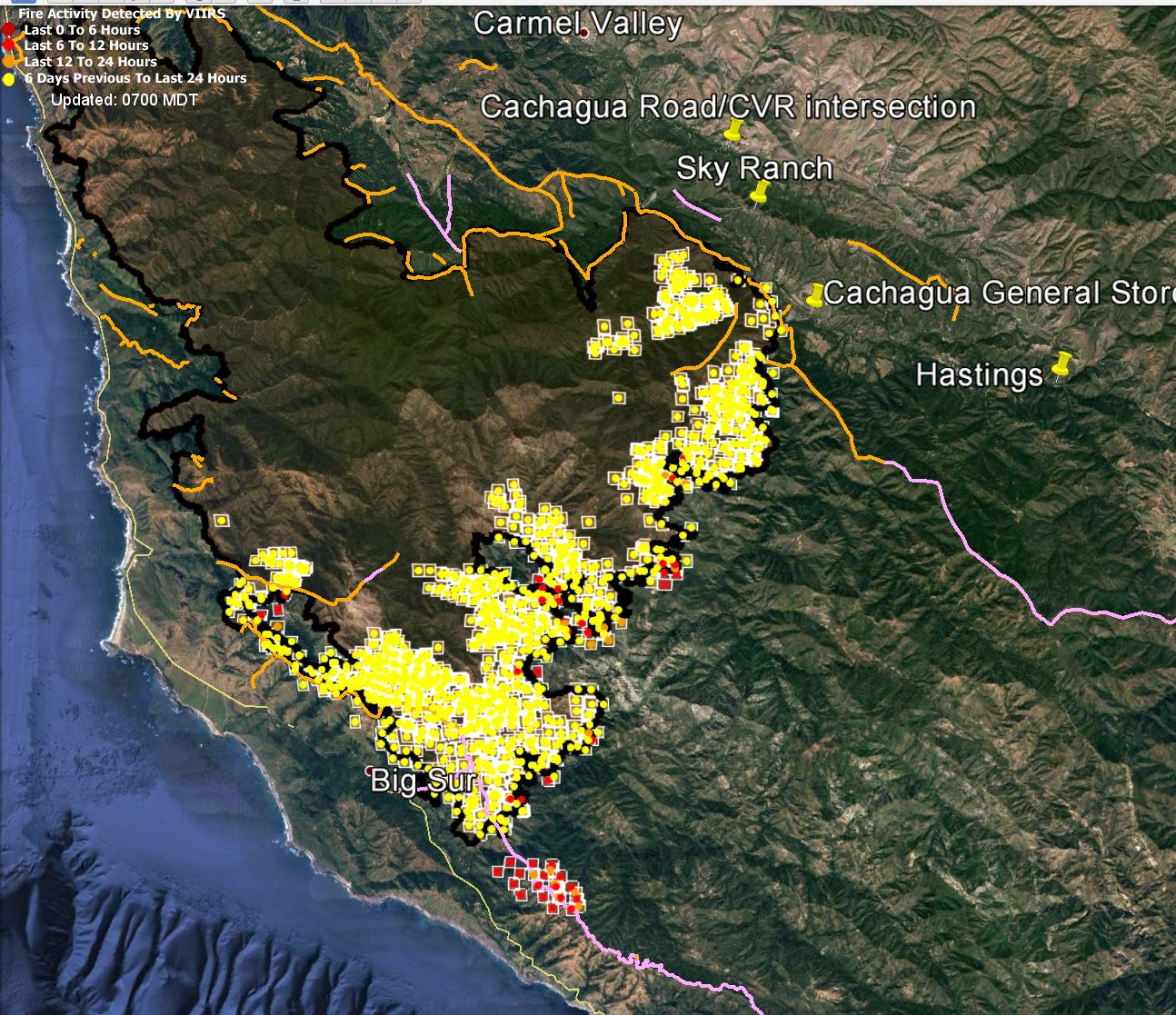Today, after a two day gap, we have aerial infrared data. And we have not seen such low activity in a long time.
In the west:
In the east:
There are hardly any areas labeled has intense,
However, there’s a caveat. Because of the cloud cover, the plane was unable to map the entire perimeter. The missed part is in white.
From the aerial team’s report:
Heavy clouds were present 20 percent of the fire. Most of the perimeter could be analyzed. Continued growth was detected in the southeast portion of the fire. This growth was in the direction of Tassajara Hot Springs. The fire within the perimeter was fairly widely scattered. Estimated Acreage: 69354. Acreage Change: +463
The official fire perimeter from last night, overlaid on the one from the night before:
In the west:
In the est:
MODIS detected no fire overnight except for two area that look to me like back burns:
VIIRS saw more fire:
Zooming in on the area with the hot spots:
The orange lines are the dozer fire breaks that were in as of 7/30, plus one that I added by hand. The pink lines are the ones that were planned as of that date. The fat black lines are the outlines of the fire’s perimeter on the official Cal Fire maps from last night.
How to read the MODIS/VIIRS heat indications: The size of the square represents the nominal margin of error. The fire could be anywhere in the square, not just at the center. Dark red squares were detected less than six hours before the data set was created. Light red squares were detected less than twelve hours before the data set was created. Orange squares were detected less than 24 hours before the data set was created. Yellow squares were detected less than six days before the data set was created. When the squares overlay other objects, the color of the square changes somewhat, but the color of the dot in the middle does not. So look at the dot if you’re uncertain what color the square should be. Since the fire is now over six days old, some of the early detections have dropped off the map. MODIS makes mistakes, sometimes missing outbreaks, and sometime misplacing them outside the nominal margin of error. It is also a snapshot of the activity at the time the satellite is overhead, and will definitely miss flare ups between passes. MODIS can’t tell the difference between wildfires and intentional back burns.









Leave a Reply